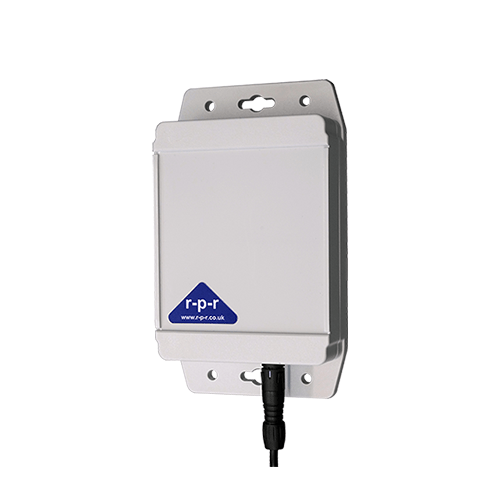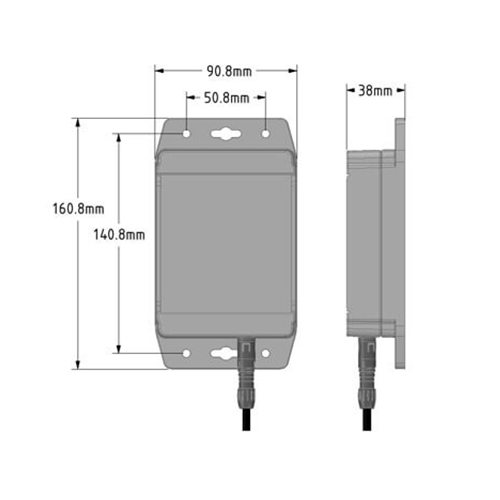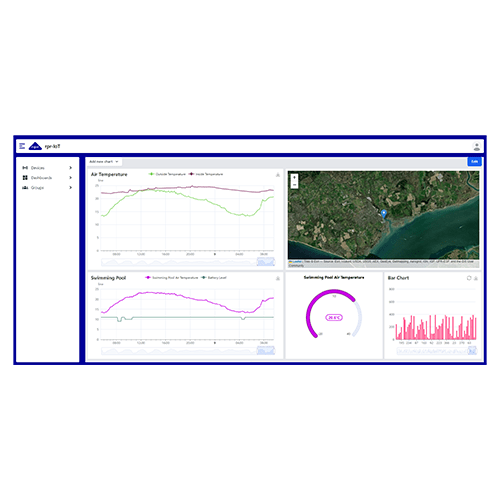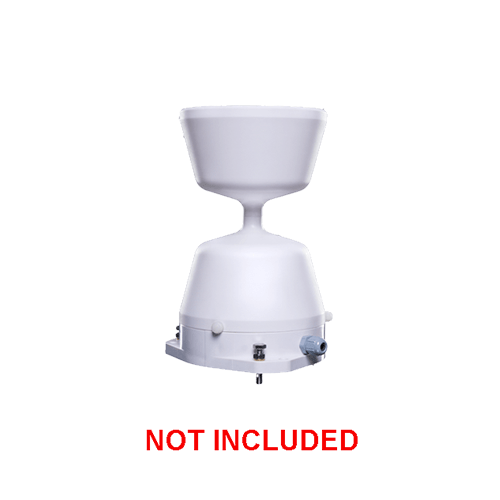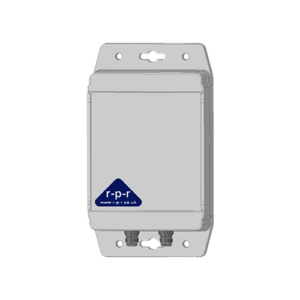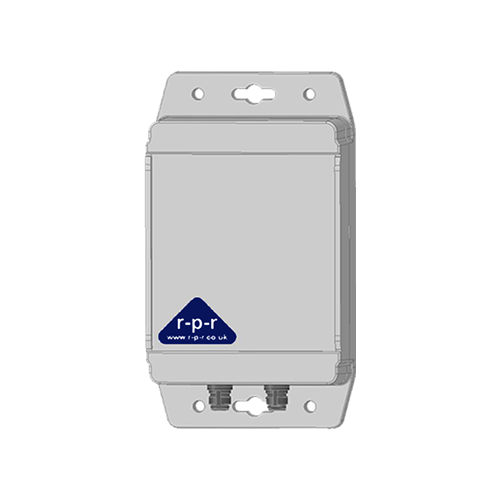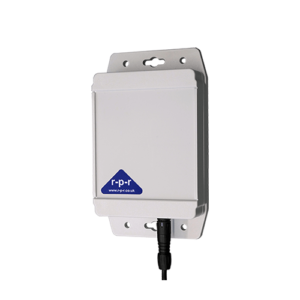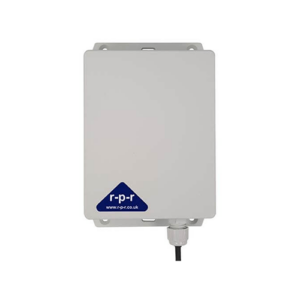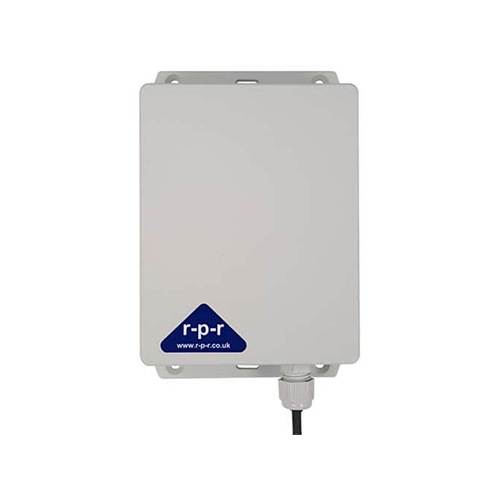rpr-IoT-R01 | Rain Sensor Node
£207.25 exVAT
£248.70 incVAT
The rpr-IoT-R01 is a battery powered rain sensor node suitable for use with tipping bucket rain gauges.
Please note: for the full functionality, you will need Rain gauge
Rain gauge is not included with the node.
Product Description
Overview
The rpr-IoT-R01 is a battery powered rain sensor node suitable for use with tipping bucket rain gauges. It communicates using long range radio compatible with LoRaWAN and the Things Network. The low power electronics are housed in a rugged IP67 enclosure suitable for outdoor and industrial applications. A sealed connector is used for the connection to the rain gauge.
Data is stored on the rpr-IoT cloud and or the RPR WeatherFile.com cloud for long-term storage and access. Readings and status information is displayed on the rpr-IoT dashboard (subscription required). The dashboard enables data from several nodes to be plotted and displayed in a flexible manner to suit the user.
| Applications |
| The rpr-IoT has a wide range of applications where temperature must be monitored.
✓ Meteorology and hydrology ✓ Precision Agriculture ✓ Sports grounds ✓ Garden or allotment monitoring ✓ Flood monitoring and warning ✓ Working conditions ✓ Education and research projects |
IoT LoRaWAN
rpr-IoT sensor nodes are LoRaWAN compatible class A devices which ensure secure interoperability between the sensor node, gateways and the cloud. They communicate using the LoRa wireless modulation technique based on chirp spread spectrum technology which allows data transfer over long distances at a very low power. It is possible for a single gateway to connect to many nodes and/or a node to connect to multiple gateways over a large area. Nodes can be spread over several km line of sight in open land. To help with deployment and monitoring of an IoT application the received signal strength and signal to noise ratio for each node is available on rpr-IoT dashboard. By default, the rpr-IoT sensor nodes use the Things Network. If operation with other networks is required, please contact Richard Paul Russell Ltd.
Message interval
The rpr-IoT-SR01 will adhere to the Things Network’s public community network fair use policy and adjust the minimum uplink message interval depending on the Data rate / Spreading Factor.
The spreading factor is determined by the Adaptive Data Rate (ADR) mechanism implemented in The Things Stack which is based on the signal to noise ratio (snr) of the received signal. When first switched on the node will join with a spreading factor of 12. To optimise battery usage the uplink message interval can be set to a longer value.
Please see the documentation for more.
Data Security
Advanced Encryption Standard (AES) 128-bit algorithms are used to provide two layers of cryptography, to the network server and end-to-end to the application server.
Dashboard
The rpr-IoT dashboard is user configurable to display data from multiple sensor nodes. Tiles can be added which display data in different formats, for example: line plots, bar graphs, dials or graphicly on a map or plan. Individual tiles can be defined and positioned by the user to suit their needs. Sensors can be given names applicable to their application.
The dashboard allows status information including battery state, signal strength, signal to noise ratio, and gateways to be monitored. Commands to set the uplink message interval can be sent from the dashboard.
rpr-IoT System Example

- Low Power Wireless Sensor Node
- Compatible with The Things Network LoRaWAN
- Data an status information displayed on the rprIoT dashboard
- Tipping bucket rain gauge input
- Tough waterproof enclosure
- Plug-in sensor
- Long battery life
| Physical | Enclosure dimensions including flanges but excluding sensor | 160.8mm x 90.8mm x 38 mm |
| Mounting Holes | 4 off 5 mm dia. 140.8 mm x 50.8 mm | |
| Mounting key holes | 2 off 8.5 mm dia. 4.6 mm slot, 140.8 spacing | |
| Flange thickness | 6.5 mm | |
| Enclosure material | Polycarbonate, Light Gray (RAL 7035) | |
| Enclosure flammability rating | UL94 5VA @ 3mm | |
| Weight | 245g | |
| Rain Gauge Input | Contact closure | |
| Scale | Adjustable for rain gauge resolution | |
| Wireless/network Connectivity | Frequency band | 863-870 MHz |
| LoRa Channel | EU868 | |
| Networking Protocol | LoRaWAN, Class A | |
| Aerial | Internal Meandering Monopole circuit board mounted | |
| Uplink Message Interval | By default, the interval is dependent on the Spreading Factor and The Things Network’s public community network Fair Use Policy | |
| Range | Up to 10km Line of sight dependent on environment | |
| Power | Battery type | A size Lithium Thionyl Chloride (LiSOCl2) |
| Nominal Battery Capacity | 4000mAh | |
| Nominal Battery Voltage | 3.6V | |
| Environmental | Temperature range | Operating: -10°C to +60°C Storage: -40°C to +70°C |
| Relative Humidity | 0% to 100% | |
| Enclosure protection | IP67 | |
| Compliance | UKCA, CE |
The manufacturer reserves the right to amend the specification and therefore the information in this document may be subject to change.
